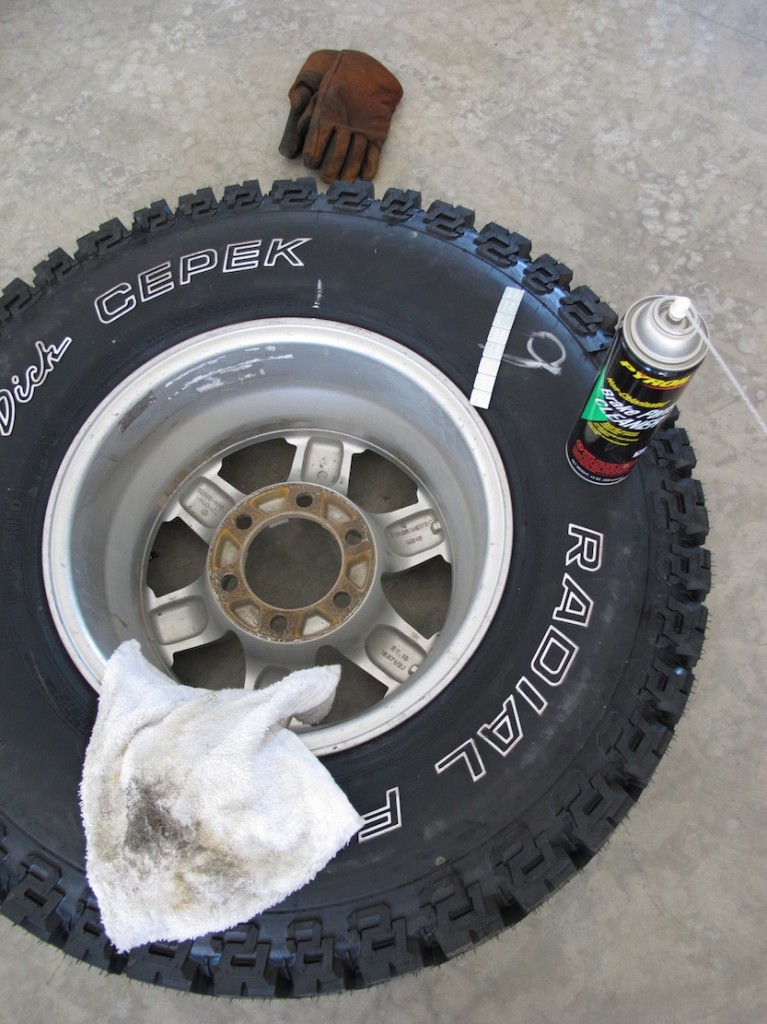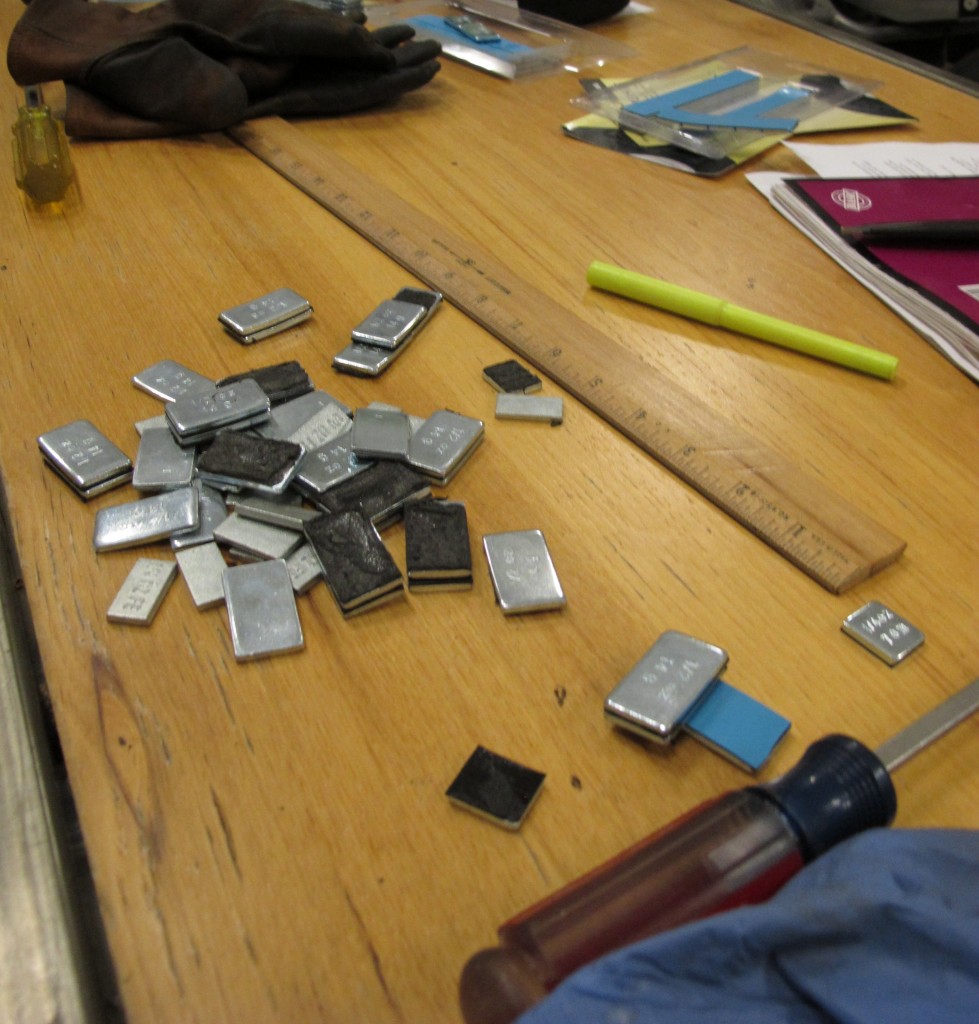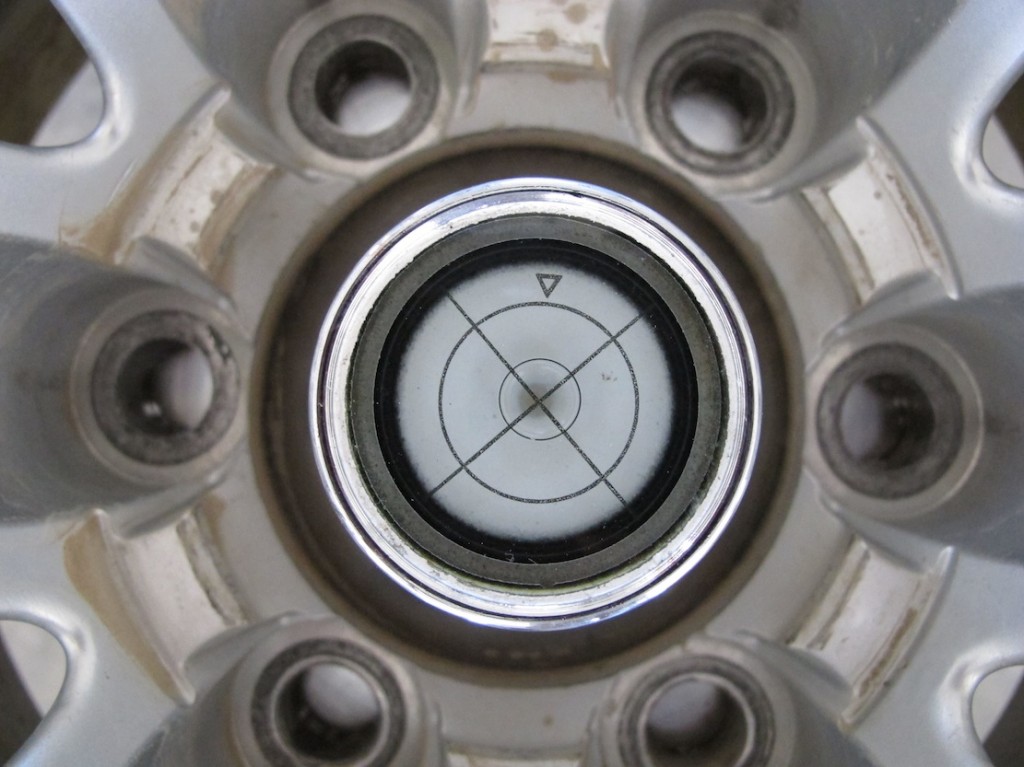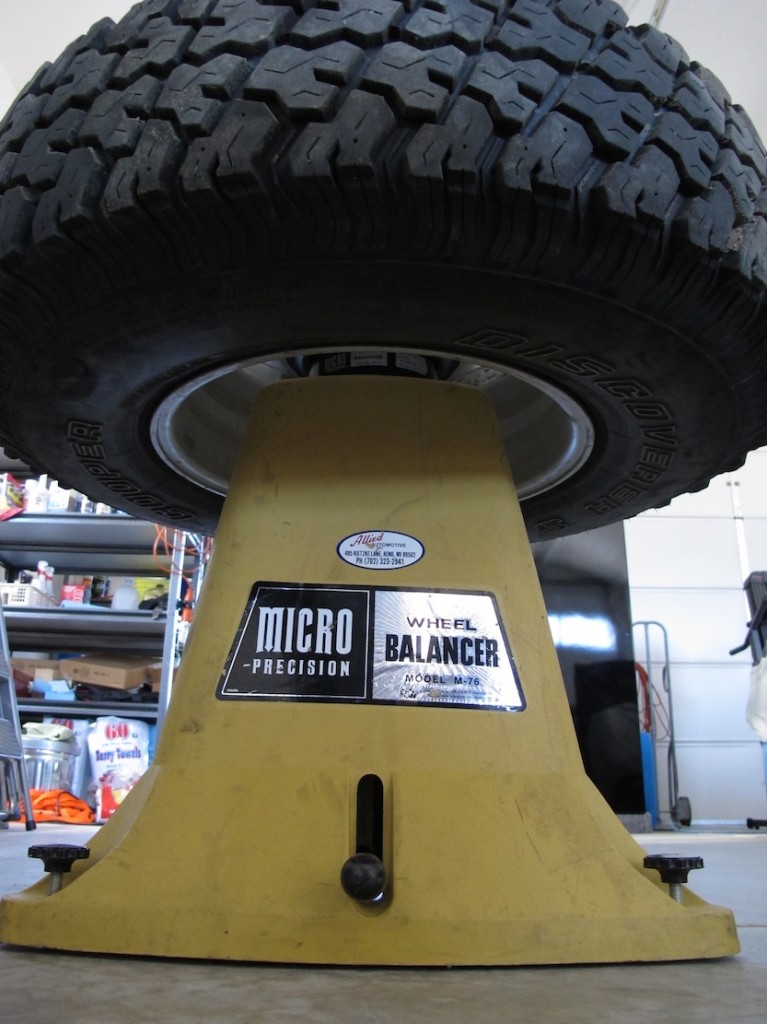Going off what little I could remember, what my friend Paul remembered, and reading what a few old-timers had to say about the lost art of bubble balancing, I started what became a long weekend project. It seems I’m not the only one who wants to remember and/or practice the old ways, as one thread I found on www.GarageJournal.com had only been dormant for about eight months. It was helpful enough that I decided to register for the forum and post a thank you comment.
I balanced and then rebalanced each tire a few times. Initially I was not exacting enough (unusual for me), or maybe patient enough. Using a bubble balancer is not the most technical, modern balancing method, and tolerating a half a bubble off is not okay, patience and precision are critical.
But there was much more to it than that. In addition to being patient and waiting minutes for the spirit level bullseye to settle before and after adding weights, there was the challenge of which method to use, this is what took so long. Learning. Several hours of attempting to adequately balance my tires, trying most of the methods a few times on each wheel.
Split the necessary weight on the inside and outside of the wheel but directly inline with the heavy spot on the other side of the tire? Or use the method that was patented by BADA of moving the necessary wheel weight out to approximately 3 & 9 o’clock opposite the point of imbalance? Of course testing the quality of the balance job requires putting the tires on the car and actually driving. For any of these techniques to work you must first level the balancer.
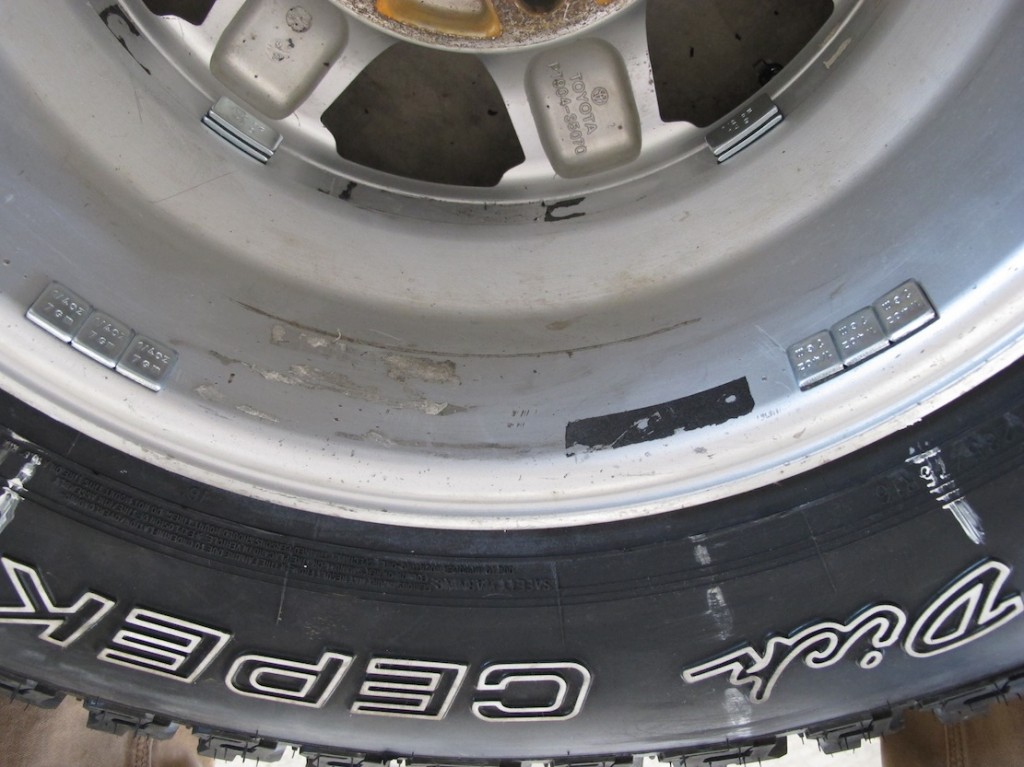
Ultimately I had the most success putting tape-weights 180-degrees across from and directly inline with the heavy spot, on the inside of the wheel. This is the same groove my tire shops had been using for my machine, static balance. If the tire/wheel combination needed 4 ounces, I centered the strip of tape-weights opposite the heavy spot. This did help spread the weight over a larger area of the wheel, though not as much as using the BADA method.
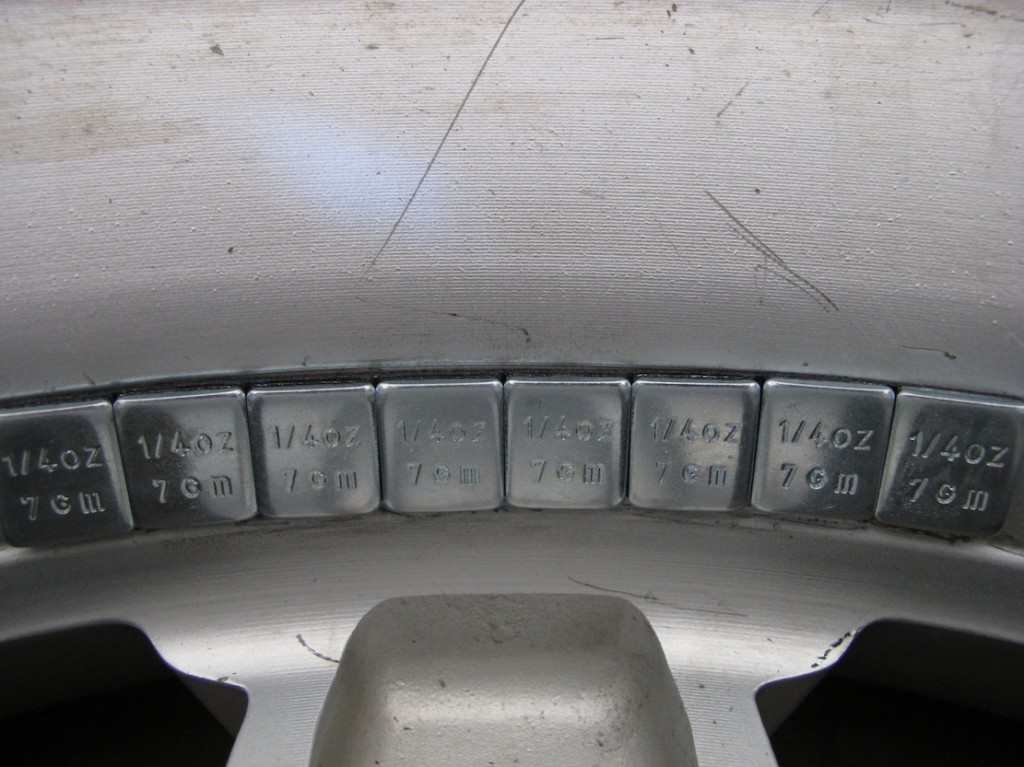
After getting closer and better, I started focusing on the fronts and refining my skills. Discovering that one of my older FC II tires that had already logged 10,000-miles on the right side of the car, didn’t want to be run on the left helped tremendously. I eventually decided that the two new tires would go on the same axle, the front, and not on the left side of the car as I had hoped would work.
Should I start manually changing my tires? My friend Paul’s recent experience changing much smaller vintage Willys MB tires with spoons makes me think not. He tore his bicep.
RoadTraveler rollin’ forward
Copyright © 2011 James Langan

